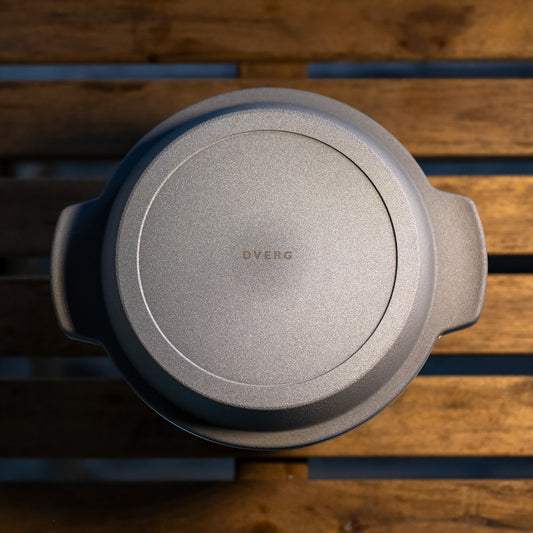Dare to leave traces of the creator
In Japan, there are many manufacturers that have continued to produce high-quality products backed by technology and tradition. For this project, we entrusted the manufacturing to a long-established manufacturer in Toyama that specializes in aluminum products. We are a manufacturer that has solid technology in aluminum processing and has continued to produce high-quality products through integrated in-house production. In order to create the product we were aiming for, we demanded a different approach from a manufacturer that had long placed emphasis on thorough quality control and uniformity. It has a handmade feel that shows the traces of its creator, and is the complete opposite of the uniformity that manufacturers have striven for.

Balancing “lightness” and “heaviness”
For this project, we decided to use aluminum as the material to make the convenient Dutch oven easier to use. It is lightweight, does not require seasoning, and can be washed with a mild detergent after use, making it much easier to use and maintain than cast iron. However, aluminum has the disadvantage of looking cheap due to its texture and lightness. In order to dispel this, we aimed for a solid feel that satisfies the user's desire for ownership, and a handmade feel that allows you to feel the traces of the maker.

“Manual work” seen during a factory tour
When the planning progressed and the samples were completed, I visited the factory. When I heard of a factory, I had the image of a mechanical production line, but I was surprised to find that much of the work was done by hand by craftsmen. In order to maintain quality, craftsmen's skills and experience are required, and I realized the wonders of Japanese manufacturing, which cannot be replaced by machines. The finished product was so beautiful that all traces of its creator disappeared, and at that moment I felt inorganic and somewhat lonely.

Made by people, not machines
Manufacturers tried various processes to achieve this impossible task. Many of the manufacturers tried this for the first time, such as damaging the surface with sandblasting or changing the timing of the alumite treatment. The scratched surface has a rough texture, and applying alumite treatment not only improves functionality such as durability and wear resistance, but also turns the surface gray. The fineness of the unevenness and the depth of color vary depending on the part, and the traces of the maker remain, resulting in a texture that gives the impression that it was made by human hands rather than machines. In addition, the design has a matte texture that gives it a solid feel, contrary to the lightweight nature of aluminum.




